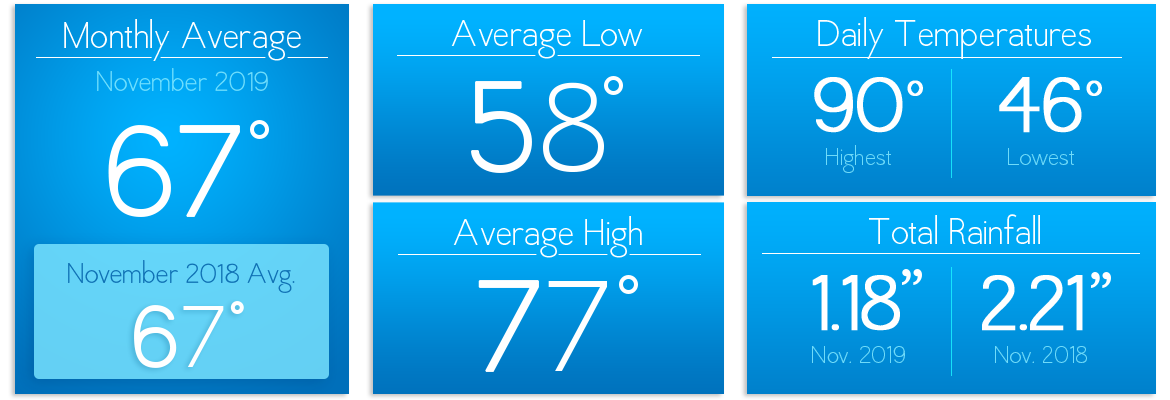Sunshine State Stats November 2019
Cooler temperatures arrived in Central Florida in November 2019. The monthly average temperature was a comfortable 67 degrees – which was the same average temperature in November 2018. The highest daily recorded temperature was 90 degrees and the lowest daily recorded temperature was 46 degrees. That’s a big fluctuation between hot and cold so both heating and cooling units likely ran in November.

November 2019’s average high temperature was 78 degrees with an average low temperature of 57 degrees. In November 2018, the average high temperature was 77 degrees while the average low temperature was 58 degrees.
Parts of the U.S. experienced record-breaking cold temperatures. Locally, we enjoyed 17 days of high temperatures over 80 degrees in November 2019. Rainfall for the month was 1.18 inches, which was down slightly from November 2018’s total of 2.21 inches.
The arctic fronts that arrived in Florida during November 2019 brought some very cold early morning temperatures. Members who turned on the heat during these temperature drops can expect to see an increase in energy consumption on their November billing statement. ENERGY STAR recommends setting your heat to no higher than 68 degrees during the winter months.
With the cooling temperatures, now is a good time to schedule an HVAC technician to service your unit. A well-maintained unit runs more efficiently and helps lower your energy usage. Read more about HVAC service and maintenance in November SECO News.
December 2019 forecast:
December 2019 is forecast for an average high of 72 degrees and an average low over 52 degrees with seven or eight days dropping into the 40s. Precipitation levels are forecast to be low with the best chance for rain at the beginning of the month.
To check historical usage, log into SmartHub to view past bills and consumption charts. If your usage is high, SECO offers several energy-efficiency tools to help you identify energy wasters. Take the Home Energy Assessment to receive a detailed email tailored to your home’s features and lifestyle. The energy-saving advice will provide low-cost ways to decrease your usage – and your electric bill.
To easily calculate how much energy your appliances, lighting, electronic devices, and other energy-using items in your home consume, use the Energy Estimator.






